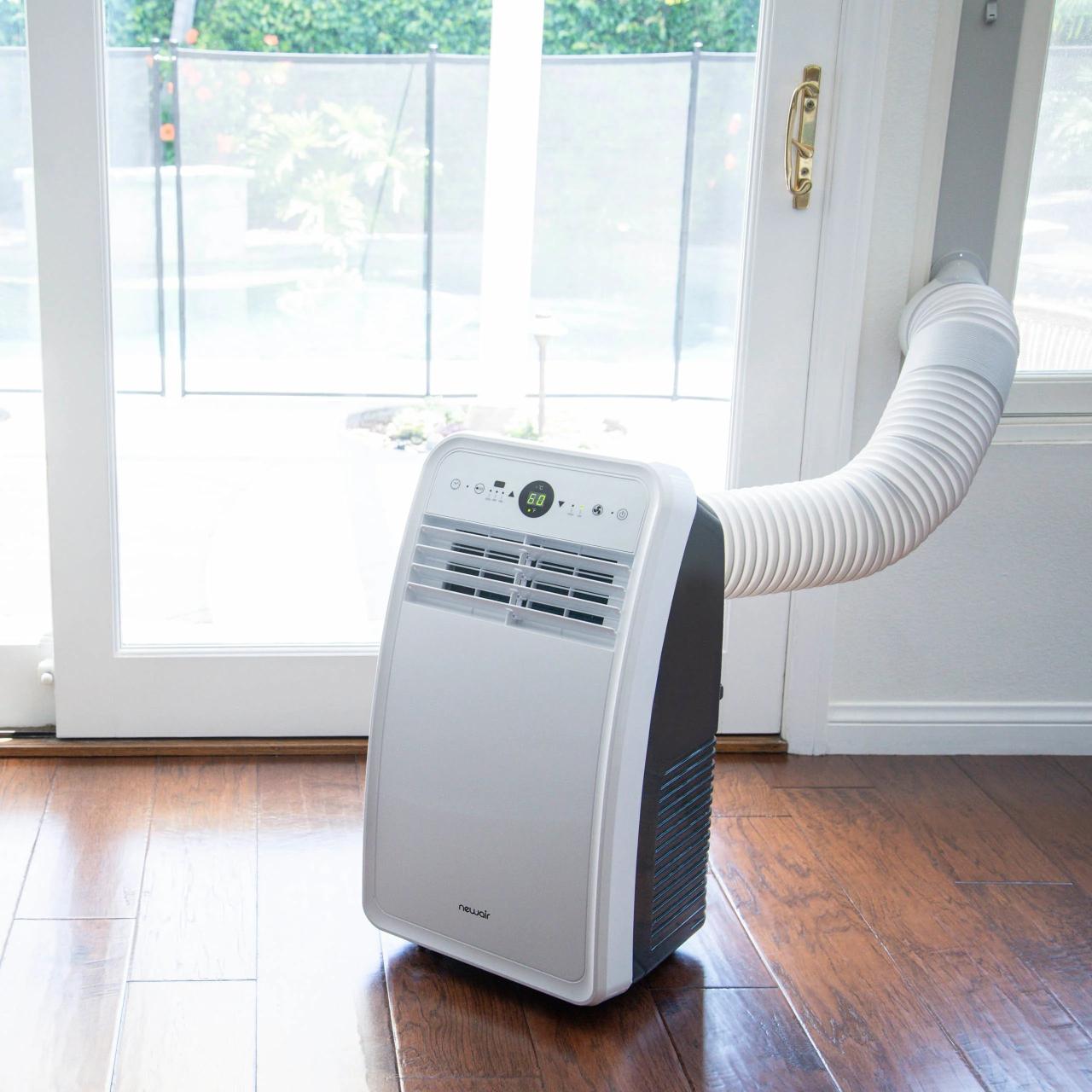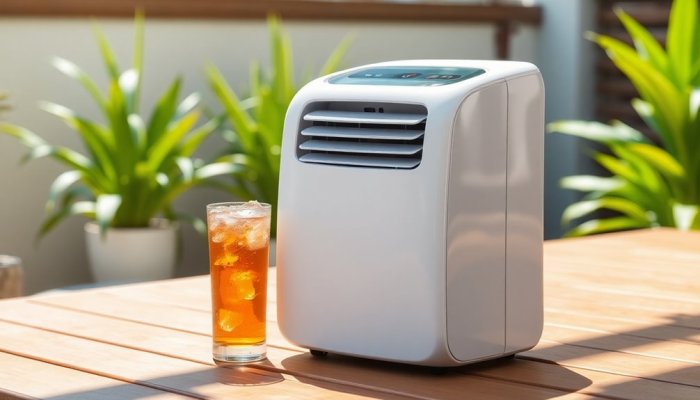Best Portable Air Conditioners for Small Spaces in 2025: Top Picks and Tips
Exploring the realm of Best Portable Air Conditioners for Small Spaces in 2025, this introductory passage sets the stage for an enlightening journey, offering valuable insights and practical advice for readers seeking optimal cooling solutions.
Delving into the nuances of portable air conditioners, this piece aims to equip you with the knowledge needed to make informed decisions for a comfortable living environment.
Overview of Portable Air Conditioners

Portable air conditioners are compact cooling units designed to provide relief in small spaces where traditional central air conditioning may not be practical or cost-effective. These units are typically on wheels for easy mobility and are vented through a window or sliding door.
Benefits of Portable Air Conditioners in Small Areas
- Portability: Easily move the unit from room to room as needed, providing targeted cooling wherever necessary.
- Easy Installation: No need for permanent installation or complicated ductwork, making it ideal for renters or small spaces.
- Energy Efficiency: Some models are designed with energy-saving features, helping to reduce electricity costs.
- Cost-Effective: Portable air conditioners are often more affordable than traditional central air conditioning systems, making them a budget-friendly option for small spaces.
Popular Brands Offering Portable Air Conditioners for Small Spaces
- Honeywell: Known for their reliable and efficient portable air conditioners, Honeywell offers a range of models suitable for small areas.
- LG: LG is a well-known brand that offers portable air conditioners with advanced features and sleek designs, perfect for small spaces.
- Black + Decker: Black + Decker provides compact and powerful portable air conditioners that are easy to use and maintain in small rooms or apartments.
Key Features to Consider
When looking for the best portable air conditioners for small spaces, there are several key features to consider to ensure optimal cooling efficiency and energy savings.
Cooling Capacity
Portable air conditioners come in varying cooling capacities measured in BTUs (British Thermal Units) per hour. For small rooms, a unit with a lower cooling capacity, around 5,000 to 8,000 BTUs, is sufficient. It is essential to match the cooling capacity to the size of the room to ensure effective cooling without wasting energy.
Energy Efficiency Ratings
Energy efficiency ratings, such as the EER (Energy Efficiency Ratio) or SEER (Seasonal Energy Efficiency Ratio), indicate how efficiently an air conditioner uses electricity to cool the air. Look for portable air conditioners with higher EER or SEER ratings, as they consume less energy to provide the same cooling output.
Opting for an energy-efficient unit can help reduce electricity bills and minimize environmental impact.
Design and Portability
When it comes to portable air conditioners designed for small spaces, they typically feature a compact and sleek design that allows for easy installation in tight areas. These units are often lightweight and come with caster wheels for effortless mobility from one room to another.
Importance of Portability
Portable air conditioners are essential for small spaces because they offer the flexibility to cool different rooms as needed. Their portability allows you to move them around without much hassle, ensuring you can stay comfortable wherever you go.
- Choose a portable air conditioner with integrated handles for easy carrying.
- Look for models with adjustable window kits to fit a variety of window sizes.
- Opt for units with caster wheels for smooth transportation between rooms.
Selecting Compact Models
When selecting a portable air conditioner for a small space, consider the dimensions of the unit to ensure it fits seamlessly without taking up too much space. Look for slim designs that can be placed in corners or against walls to maximize space utilization.
- Check the dimensions of the unit to ensure it fits in your desired location.
- Consider models with vertical airflow for efficient cooling in compact spaces.
- Look for units with a compact footprint to minimize the amount of floor space they occupy.
Technology and Innovations

Portable air conditioners for small spaces have seen significant advancements in technology in recent years, making them more efficient and user-friendly than ever before. From smart features to inverter technology, let's explore some of the latest innovations in this industry
Smart Features and Connectivity
Modern portable air conditioners now come equipped with smart features such as Wi-Fi connectivity and app controls. This allows users to easily monitor and adjust the settings of their air conditioner remotely, providing convenience and flexibility.
Inverter Technology for Efficiency
Inverter technology has revolutionized the way portable air conditioners operate, offering improved energy efficiency and performance. Unlike traditional air conditioners that constantly switch on and off to maintain the set temperature, inverter technology adjusts the compressor speed according to the cooling needs.
This results in more consistent and precise cooling, reduced energy consumption, and quieter operation.
Maintenance and Care
Proper maintenance is essential to ensure that your portable air conditioner continues to run efficiently and effectively. Regular care can help prolong the lifespan of the unit and keep it performing at its best.To maintain your portable air conditioner, follow these maintenance tips:
Cleaning Filters and Vents
It is important to clean the filters and vents regularly to prevent dust and debris from accumulating and blocking airflow. Here's how you can clean them:
- Turn off the unit and unplug it from the power source before cleaning.
- Remove the filter and either vacuum or wash it with mild soap and water. Make sure the filter is completely dry before reinserting it.
- Use a soft brush or cloth to clean the vents and remove any dust or dirt buildup.
Other Components Maintenance
In addition to filters and vents, it is important to pay attention to other components of the portable air conditioner. Here are some maintenance tips for other parts of the unit:
- Check the condenser and evaporator coils for dirt and debris. Clean them using a soft brush or cloth.
- Inspect the drainage system for any blockages and clear them if necessary.
- Ensure that the unit is placed on a level surface to prevent water leakage and other issues.
Troubleshooting Common Issues
If you encounter any problems with your portable air conditioner, here are some common issues and troubleshooting tips:
- If the unit is not cooling effectively, check the filters and vents for blockages and clean them.
- If the air conditioner is making unusual noises, ensure that it is placed on a stable surface and not vibrating excessively.
- If the unit is leaking water, check the drainage system for blockages and make sure the unit is level.
Regular maintenance and care of your portable air conditioner can help you avoid potential issues and ensure that the unit continues to operate efficiently. By following these tips, you can enjoy cool and comfortable air in your small space for years to come.
Conclusive Thoughts

As we conclude our discussion on the Best Portable Air Conditioners for Small Spaces in 2025, it's clear that these innovative cooling devices are essential for maintaining a cool and pleasant atmosphere in compact living spaces. With a focus on efficiency, convenience, and performance, these portable units are sure to enhance your comfort and well-being all year round.
Question & Answer Hub
How often should I clean the filters of a portable air conditioner?
You should ideally clean the filters of your portable air conditioner every 2 weeks to ensure optimal performance and efficiency.
Can portable air conditioners be used in rooms without windows?
No, portable air conditioners require a window or vent for proper ventilation, so they are not suitable for rooms without windows.
Are all portable air conditioners noisy?
While some portable air conditioners can be noisy, many modern models are designed to operate quietly, especially when set to lower fan speeds.